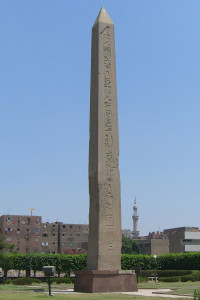 Do I need to say it? Have you seen the memes linking ancient obelisks with fertility gods? That they are really phallic symbols and that the reason we have one in Washington D.C is because the Washington Monument represents the “Father” of our country?
Do I need to say it? Have you seen the memes linking ancient obelisks with fertility gods? That they are really phallic symbols and that the reason we have one in Washington D.C is because the Washington Monument represents the “Father” of our country?
Is there any truth to this at all? Well, let’s look at the archaeological data and see.
First – let’s get the definition
Obelisk – a shaft of stone (usually granite) with a pointed top; word comes from Greek obeliskoi: which means little spits or meat skewers
Now what was the purpose of the obelisk? According to Egyptologist Barbara Watterson:
“Obelisks were cult symbols of the sun god (referring to Re), and date back to predynastic times when they were worshipped as models of the miraculous shaft of stone upon which the sun was to place itself upon first rising.” (The Gods of Ancient Egypt, 1984, pg 68)
Richard H. Wilkinson offers the following interesting tidbit about obelisks: Baboons, who were thought to greet the rising of the sun (hence their noisiness in the morning), are often featured on the pedestals of obelisks (Reading Egyptian Art, 1992, pg 73)
Re, better known to the western world as Ra, was probably the least sexually oriented god in the Egyptian pantheon. Whereas many others were incestuous, marrying their brothers and sisters, Re was a creator god who created both gods and people without any indication of fertility apart from his words, his sweat (used to create the other gods) and his tears (used to create humans). This is decidedly UNLIKE other Egyptian mythologies about the creation of humans – but we cannot take those stories into consideration in our discussion of obelisks, which were associated with the worship of Re, centered in Heliopolis.
There are currently twenty-eight surviving Egyptian Obelisks worldwide, and only eight of them are still in Egypt. None are associated in any way, shape or form, with any sort of fertility worship. Re was the sun god – he spent his days sailing across the sky in his sun barque and his nights sailing through the Netherworld in his night barque – no time or need for fertility.
I have a stack of books dealing with fertility gods and goddesses written by serious scholars, people with credentials who are subject to per review, and archaeologists and not one, not even one, mentions obelisks in reference to them.
Now, we do see obelisks in other ancient Near Eastern cultures in the form of historical monuments where histories and great victories were recorded – but still, they are not associated with any sort of fertility, they are just monuments. For example, the Black Obelisk of Shalmanesser III, an important witness to the Biblical King Jehu.
Look, I used to believe this one because it seems obvious and it was kind of funny. But the archaeology is clear – the obelisk is a sun needle, a resting place for the sun, and we cannot read more into it than that without sacrificing the truth. No real archaeologists are even debating these facts – despite many armchair theorists wanting to connect unconnected concepts for their own religious purposes. Not everything that is heathen is sexual in nature, and the obvious is quite often the product of our modern over-sexualized imagination and wishful thinking.
Always remember that anyone can make up an amusing meme or post something on the internet but that doesn’t make it true. Not only doesn’t it make it true, but like posting urban legends and spoof stories, it severely damages our witness as believers. It makes us laughing stocks – and when that happens, it causes the Name of our King YHVH to be brought to shame. If we can’t prove it, then we shouldn’t post it. The information is either there, or it isn’t – let’s do our homework.
(Note: Before anyone brings up the Asherah “pole” I would challenge them to (1) find a reference linking them to obelisks and (2) find any proof that an Asherah was actually a pole (they are merely called Asherah in scripture and we have no solid proof of what an Asherah was among archaeologists, only theories))
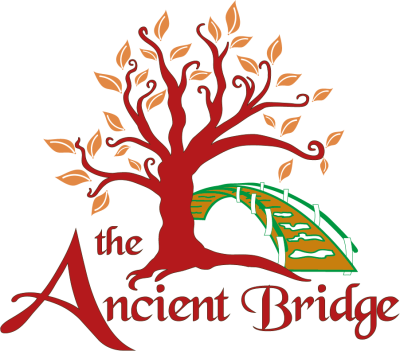
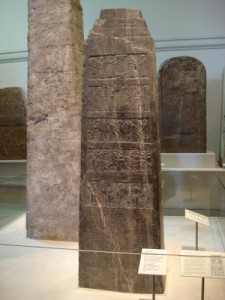




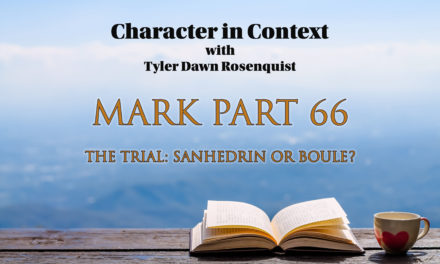

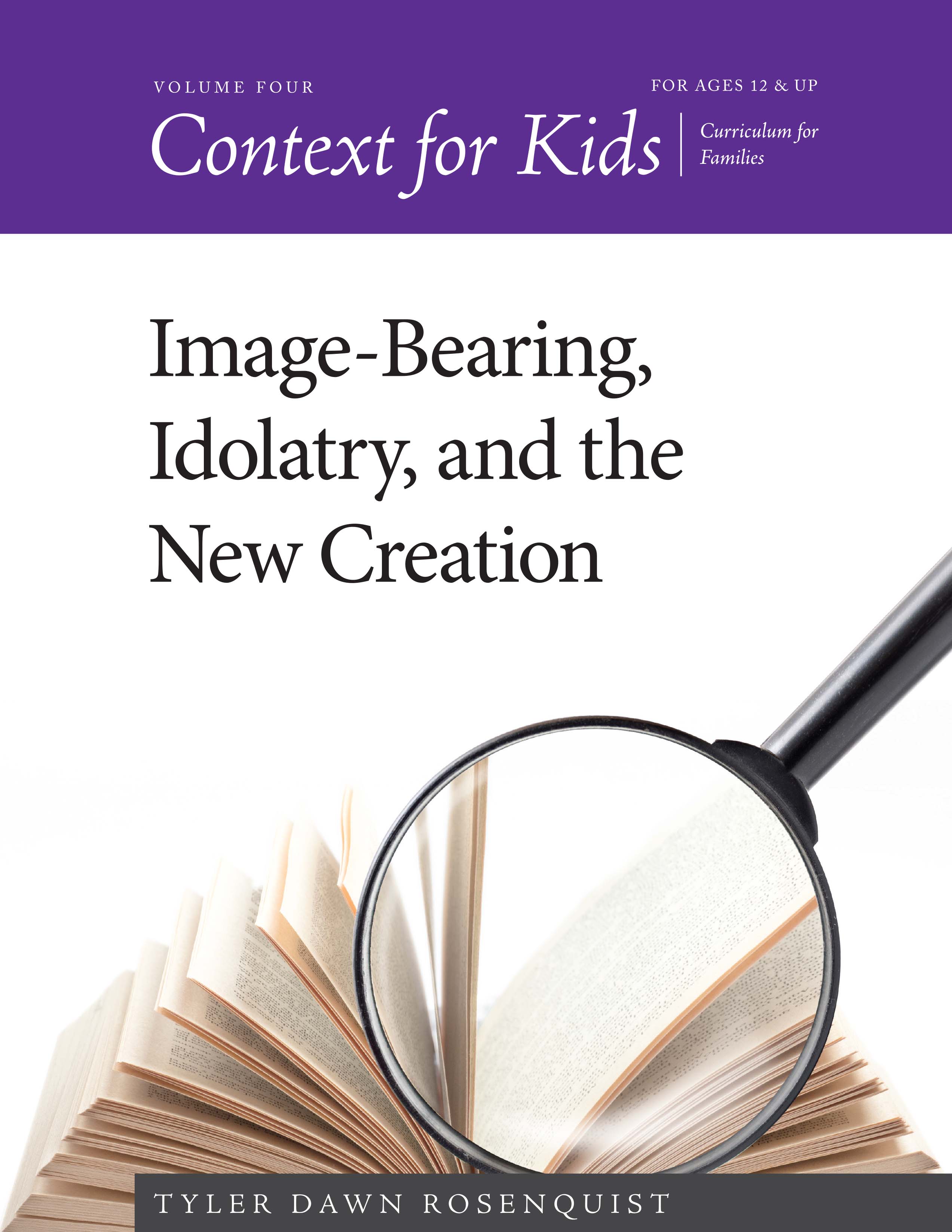

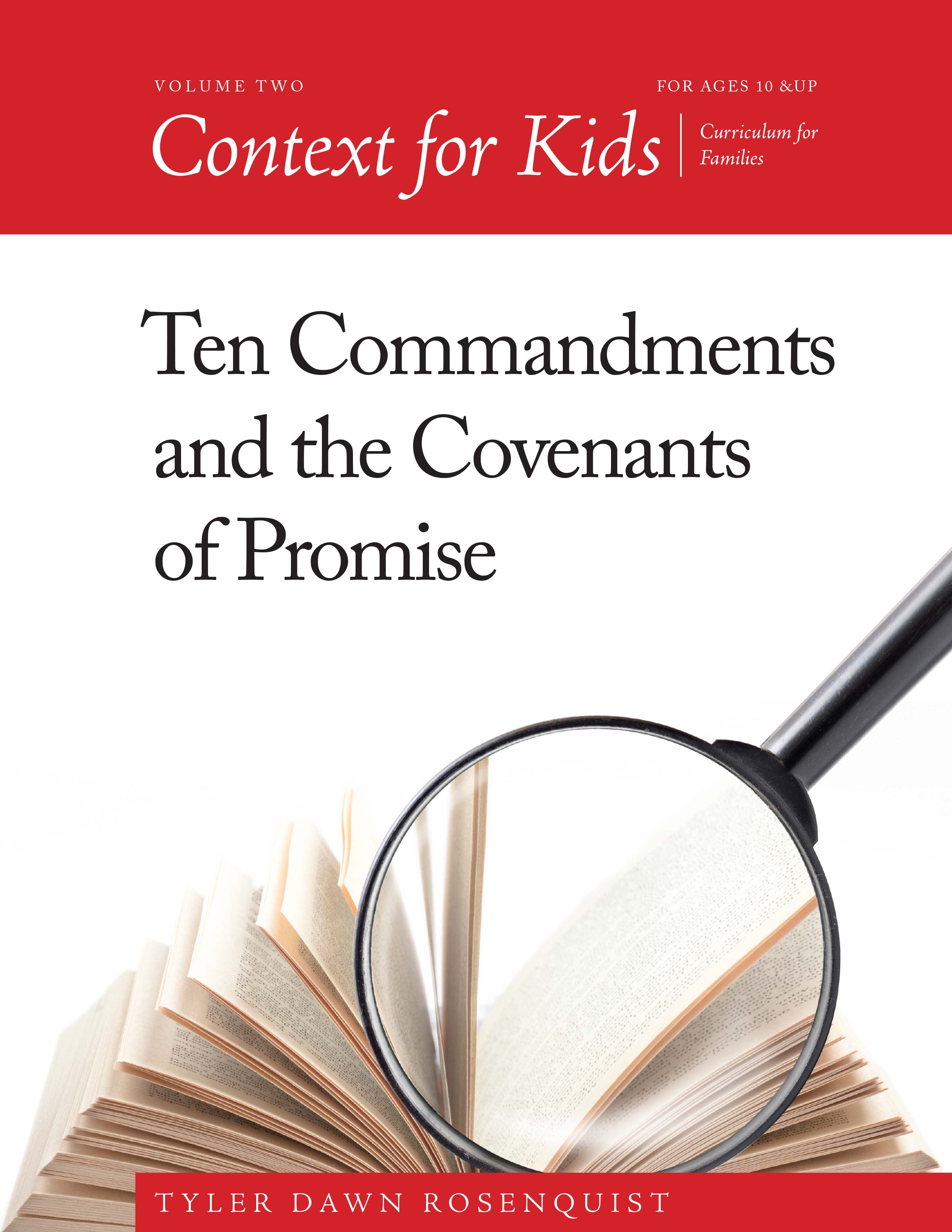

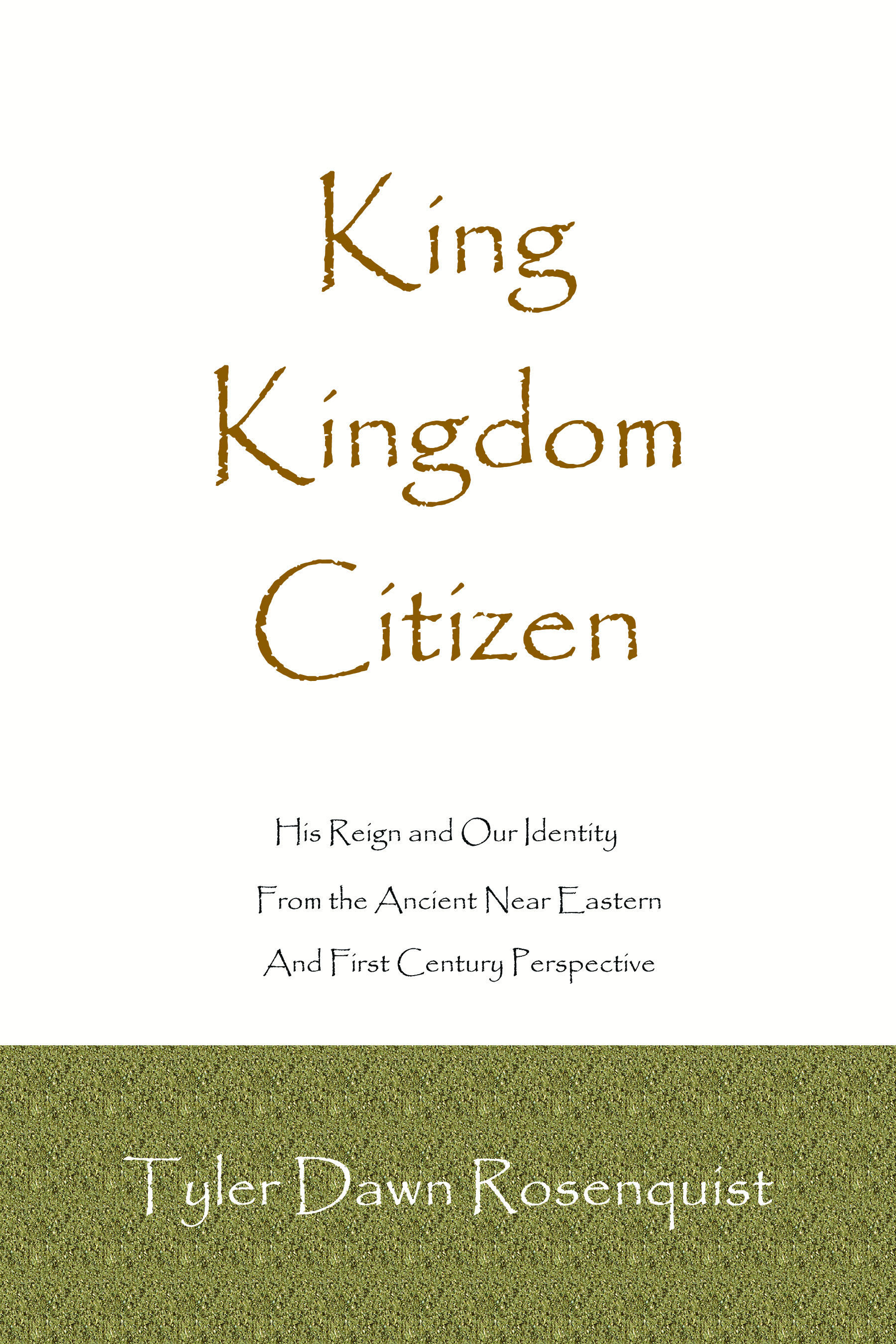






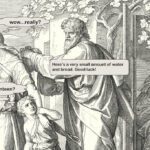
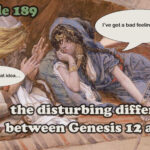

Shalom! I am very much enjoying your writings!! I have a question about the non-sexual part, and would love to hear your input. I had originally heard from another source (who’s thoughts/teachings are questionable, so I’m not in the least surprised that this disagrees with what said person is saying, but still curious 🙂 ) that when Nimrod was slain he was worshipped as a fertility god, and that he was chopped to pieces by someone(s), and his wife Semeramis (spelling?) went around and found all his parts, except THAT one, and she built that in his honor for the missing part. I’ve never done the research on my own (I know, shame on me 🙁 ), but I am wondering if you can lead me in the right direction to find this information out, or if you could share your thoughts?
Keep writing, I’m learning so much and have been so blessed!
Blessings and shalom to you and yours,
Casey
Hi Casey 🙂 I was just doing an impromptu Bible study over the phone with someone about this yesterday! There are five verses in scripture about Nimrod (three in Genesis, one in Chronicles and another in Micah) – and would you believe that there are 21 verses between his brief account and the tale of the Tower of Babel – and Babel is not even among the cities accredited to Nimrod as having been built? There is no archaeological evidence about Nimrod at all, some say he is Sargon, but since Sargon conquered cities that the Bible says Nimrod actually built, we can rule out Sargon as being Nimrod. As for the “you know what” story – that was completely stolen from the story of Isis, Horus and Osiris in Egyptian mythology by a man named Alexander Hislop in the 19th century who was a Scottish protestant clergyman with a vitriolic hatred of the Catholic Church. Although it was completely discredited back in the 1920’s by archaeologists and historians, it is very popular with many people to this day and many books have been written based on it. Sadly, archaeology shows no evidence as to his claims of the “evolution” of religion starting at Babel – and since the Bible speaks almost nothing of either Nimrod or the Tower, that is very odd – idolatry is always chalked up to Egypt, Canaanites and Jeroboam until the times of the late prophets, when Babylon came to power. Semiramis was a very real Queen, 12th century BC and quite the piece of work. Not married to a king named Nimrod and no son named Tammuz. If you would like to read that story of Isis, Osiris, Horus and Set – I can get you a link. I have a fairly good version of it from Anthony S Mercatante’s Who’s Who in Egyptian Mythology. This is a fairly decent version here – but I like the Mercatante book because it goes into all the players and all the different versions of the story http://www.egyptianmyths.net/mythisis.htm I just recorded a video yesterday on my youtube channel where I discussed my problems with two different versions of the Tammuz story and how I reconciled them https://www.youtube.com/watch?v=GoWLF5gmf94.
Thanks for asking!
Hi again!
The Osiris/Isis story reminded me that my 7th grade history teacher taught us a shortened version. It did say that there was a missing Osiris part, but wasn’t specific about it. It’s interesting that people have assumed that it was the male part, when there weren’t any clues in the at all!
Do different pagan religions have similar stories/myths that they’ve told?
I’m flabbergasted that the things I though I had a fair understanding about the background of things aren’t true, and that’s ok! 🙂 I’d rather have a good foundation of understanding and have at least a basic idea of what I’m talking about than the wrong one, lol! 🙂 For me I guess it’s just the irony that instead of it being scripture (not to say that I know everything, because I don’t at all, not even close), it’s about the history of the un-godly aspect.
(That’s why I’m full of questions! 🙂 )
What’s the background of Christmas and Easter? I had been taught that it was all connected with the Nimrod thing.
I do apologize if I’m writing too much – I LOVE archeology and ancient history, and I really want to get a better understanding of what I’m coming to realize was not the correct background of what I understood.
I’m just beyond blessed at the work that you and the other Talmidim members are doing, no way can we afford to put in what you all have, though I definitely wish we could! Yah is really blessing all of you and you are blessing so many.
Happy belated birthday!!! I wish you lived closer, but then again I’d probably visit you so much that you’d lock the door and pretend you weren’t home seeing as I’d be knocking on your door just about everyday lol!
The Isis/Osiris story is pretty blunt about which part was missing, and which kind of fish swallowed it lol – but I am certain that they didn’t want 7th grade audiences in on that one. Some stories are similar between religions, but shockingly, not very many.
Paganism was about gods taking over certain functions, and so everyone will have a god of the sun, storm, agriculture, fertility, etc. In their minds, every function that we attribute to science had to have a separate god behind it, and so we see similar gods but the stories can be quite varied. Everyone has a mother goddess with a child, because that was a primary function in every society, just like agriculture was primary everywhere. We don’t need Hislop’s theory of religious evolution to explain things – we just need to look at their mindset and since they all had the same mindset, they all had to have similar gods. But it’s the stories that are all different. Hislop equated Tammuz and Adonis as “dying gods” but Tammuz never really died and Adonis was killed by a wild boar. One was a hero and the other was not. They really had nothing much in common, in reality.
Christmas and Easter, well, they aren’t biblical but they aren’t as pagan as people make them out to be either – in all my studies I have yet to come across an Ishtar Sunday, and Ishtar never turned a bird into an egg-laying rabbit, and the real Queen Semiramis lived in the 12th century BC, long after Ishtar began to be worshiped, and no one ever dipped eggs in infant blood that I have ever seen – the ancients really weren’t as horrid as we paint them to be sometimes. As for Christmas, long story there. I really prefer to simply say that something is not biblical and therefore is not holy, only God can determine holy days – which He did with His feasts which are all shadow pictures of Messiah past and future. What we have been given to celebrate is profound 🙂
As for books, what do you want to study? Right now I am studying first century context and I can recommend some great books on that, or if you want to focus on the ancient near east I can help you out with that too. Right now I am reading Jesus and Empire by Richard Horsley, amazing book, just finished After Paul Left Corinth by Bruce W Winter.
Kindly I would like to ask a question. How is Christmas and Easter celebritions biblical as indicated above. They neither advocated for nor celebrated anywhere in the Bible
I am very confused about your question. I clearly indicated in the above response that they are not, in fact, Biblical. What exactly is your question?
PS – would it be ok with you to share the titles of the books you’ve read/are reading? I’d like to see if my library has some. I plan on getting your two books (hopefully) next month to study as well.
Shalom!
Yeah, I think looking back on it now the part thing does make sense. 🙂
Wow! That really does amaze me. I wonder where dying eggs comes from then. So weird!!!
And yes, absolutely what we have to celebrate is more profound! 😀
Right now I’m interested in the ancient history aspect 🙂 I think I’ll start there. I will write down the other titles and hope my library has them! 🙂
For a good starter book on ANE history, try Cyrus H Gordon, “The Bible and the Ancient Near East” and to find out how the ancients thought, try John H Walton’s “Ancient Near Eastern Thought and the Old Testament.” Also, Walton’s IVP Bible Background Commentary of the OT” is very interesting.
Will do, thank you so much! 🙂
Thanks for all the info, I appreciate it. Its important that we seek truth and that we do not spread falsehood even if it agrees with our worldview.
I just wanted to comment about the obelisk… I do believe it is an esoteric/masonic teaching that the obelisk is a phallic symbol. Here is a quote from Morals & Dogma by Albert Pike, a 33rd degree Freemason and a man who was very influential in Scottish Rite Freemasonry:
“Hence the significancy of the phallus, or of its inoffensive substitute, the obelisk, rising as an emblem of resurrection by the tomb of buried Deity at Lerna or at Sais.”
Pg. 394
http://www.sacred-texts.com/mas/md/md25.htm
My point is – even if the obelisk was not originally used as a phallic symbol by ancient cultures, there are still many who see it as such today and not just because of a meme they saw on the internet. 🙂
Shalom!
I do understand what freemasonry has done in modern times with this – however, freemasonry is not as ancient as they claim to be. Freemasonry has stolen symbolism from ancient cultures and redefined the meanings of all of it. Mormonism has done the same thing with symbols and language. Say words like redemption, salvation, and shedding of blood to a Mormon and they have completely different meanings for those words that allow them to carry on a conversation with a Christian flawlessly – neither one knowing that they are literally saying entirely different things – each side causing the other side to believe they are in agreement. I never use freemasonry as a litmus test for anything, any more than I allow masonry to define words and symbols because they just did whatever they wanted with what was there and often claimed it was theirs in the first place. My father used to be a mason but I am grateful he is done with that. Freemasons are charlatans and liars with a made up history and genealogy, laying claim to illustrious ancient foundations where none exist.
Tyler, have you had a chance to read this article by Christine Miller, on Alexander Hislop’s book, *The Two Babylons*?
http://www.alittleperspective.com/on-the-two-babylons/
Here’s just one quote that caught my eye:
—
In fact, I read Hislop’s work last after reading numerous other works of even greater antiquity, all of which confirmed Hislop’s facts, especially in the first part of the book, the part dealing with the Babylonian connection to paganism. Those resources include Josephus, George Rawlinson’s Five Great Monarchies of the Ancient Eastern World, Jacob Bryant’s Ancient Mythology, and others. This is why, when I read Hislop, his statements concerning Nimrod and Babylon did not surprise me, having encountered evidence for them in the numerous other works I had read in preparation for Story of the Ancient World.
Hislop footnotes and documents his information extensively from classical (Greek and Latin) sources, which were independently verified by Edward Joshua Cooper of Markree Castle, Ireland, who passed away in 1863, ten years after the first edition of Hislop’s book was published. Cooper was a distinguished scholar and astronomer, the author of his own works on astronomy, a fellow of the Royal Society, of the Royal Astronomical Society, and a member of the Royal Irish Academy, as well as a member of Parliament for many years. He was a sincere Christian who, in his private time, personally examined 260 works cited in Hislop’s footnotes in the original Greek and Latin and confirmed their accuracy.
Back in December of 2006, I asked that if Hislop’s assertion that Christmas is a tradition which has been received from the Roman Catholic Church, and has been infected with Babylonian paganism, is false, then why did the Puritans who emigrated to America in 1620 forbid the keeping of Christmas as a pagan festival 200 years before Hislop was born? No one has answered this question yet, to my knowledge.
—
I’m seeing a lot of people who say that Hislop has been discredited, or that archaeology disproves him, but I’m not seeing any evidence to these accusations. I was just wondering if you were aware of this. 🙂
Hislop falsified a lot of his sources – if you go through them, you will see that he picked and chose what he wanted to promote and did not supply the evidence in his source materials that spoke against his theory of religious evolution. It is very much like Darwin’s theory of evolution – which is promoted despite no hard evidence, but is based only theories that must be taken on faith. I am surprised to see her make these statements because despite Hislop’s claims that false religion came from Babylon and was tied to Babel, Josephus does not tie the Tower to paganism (I just re-read it Ant. I. IV) – but to a group effort to subvert further attempts to flood them out. Josephus’ Nimrod was about governmental control and rebellion towards God. Targum Pseudo Jonathan (the same Targum that gives us the concept of Messiah being “the Word”) states that Nimrod was a sinner and yet became a hero of the faith, leaving Babylon during the building of the Tower because he was so disgusted with what they were doing, “Out of that land (Shinar) Nimrod went forth and ruled in Asshur because he had not wished to associate with the project of the generations of the divisions.” Targum Onkelos mentions nothing about pagan connections, nor does Targum Neofiti – which simply equates him with a sinner who made his own laws for people to follow. Actually, almost no one was associating Nimrod with paganism in antiquity and even when legendary material is included in the targums, it is not consistent nor is it even in line with what the Bible is saying – much later in the Jewish Midrashic legends they actively started giving Nimrod credit for the works of Zoroaster – a man who certainly did not found Babylon or Nimrod but was a religious leader. This was later than Yeshua. All those books you mention are late date, and do not line up with extant Jewish writings from before Messiah that do not generally make such a sweeping connection http://www.michaelsheiser.com/PaleoBabble/NimrodHTR.pdf. Certainly they would know, as they had just come out of Babylonian captivity – certainly all the world would know. Certainly the Bible would say something. I have studied the claims and frankly they are all stolen from random characters from various mythologies and equated in ways that just don’t work when you study them in depth. Linking Tammuz and Osiris and Adonis, for example – there are no real comparisons. Tammuz was a shepherd and agricultural god, who was sent by his wife Ishtar to be in the Underworld for 6 months out of every year (explaining the dying off of the crops and the lack of rain), Osiris was the actual god of the underworld, having been murdered by his brother Set who cut him into many pieces and scattered them all over the place, Adonis was a human killed by a wild boar.
I am left in the unenviable position of slandering people who are long since dead. Hislop’s sources have been since read by many others – most notably the man who made Hislop the most famous and who had to retract his bestselling book after being challenged http://www.equip.org/PDF/DC187.pdf . Hislop lifted things out of context and actually misrepresented his sources – it was 19th century Scotland and the hatred between Catholic and Protestant was such that we cannot even imagine. Religious hatred compromises people. Just look at facebook around Christmas and Easter – people will believe and pass on absolutely anything as fact in order to club Christians. That Puritans banned Christmas for 22 years (1659-1681) should not be shocking – goodness they banned a lot of things – like maypoles, dramatic performances, and festivities on Saturday nights. Remember that Puritans were virtually against everything both Catholic and Protestant (indeed they were terrible persecutors of the Quakers), and there were bad excesses in celebrations in Europe during that time. The Puritans saw those excesses, knew from their Bibles that it was not Biblical – but I see no mention from them of banning it for ideas that it was Babylonian in nature. Just because the Puritans banned something does not mean that it came from Babylon – just that they disapproved of it.
Archaeology does disprove him, absolutely – after studying ANE religion very intensely over six months earlier this year, I went to a group of friends who also study ANE and asked point blank – “why am I not finding an ounce of support for all this stuff that is being taught?” Because the evidence wasn’t there. Here’s the problem – a surface reading of Hislop sounds logical, but the evidence is not there. We have mountains of cuneiform tablets now – we have epics of Tammuz, Ishtar, Dagon and the Rosetta stone allowed the unlocking of Heiroglyphics so that we could translate what the Egyptians had on Osiris and Horus. None of them remotely support Hislop – the only thing I even see of his that strikes me as valid that I can think of offhand (and it has been a while since I read anything of his) is the mother child iconography.
In the Bible, paganism is always tied in with Egypt and Canaan. Babylon is tied in with commerce and worldly government.
I would think, that spending nine months now reading a mountain of legitimate archaeological and scholarly articles from PhDs and I think I have 35 books, most written by PhDs in the actual field of study, that I would have substantiated his claims, if they were valid. I can’t and I haven’t and I have even had to remove my own book from the market in order to rewrite it. I had to admit error. I had to apologize – and it is costing me money and even supporters because people so badly want this to be true and many people have written books on it. The archaeology isn’t there – if he had evidence, it isn’t showing up in any ancient source. It should have – if the proof was there for him it should be there now – and not just in books of legends (like much of Herodotus who was great with Greek stuff but not so great with any other culture, very much hit and miss). In fact, the evidence should be all over the place, blatant and in the cuneiform tablets. What’s more – the Bible itself should mention it – it should specifically say that Nimrod is responsible, but it doesn’t even place him at the Tower. Nimrod is named four times – and it is Assyria and not Babylon, that is called the “land of Nimrod” – nowhere does the Bible say that paganism has anything to do with him or even that the Tower was associated with him. We have to read it into the text. I hope you will check out the links and my other blogs. This is a tough one for many of us to swallow because we have invested so much of our integrity and businesses into it but I just couldn’t live with myself, even over one chapter that I could not only not prove, but actually disproved.
I appreciate Ms Miller’s position, I know her history curriculum was based on it and I know what it is like to do the deep research and have to retract a book. The evidence just isn’t there. It should be everywhere. Every legitimate ancient near eastern scholar and archaeologist should be finding it and writing about it – a great many are not believers and therefore have no horse in this race, but no one in the scholarly community is seeing this evolution of religion. From afar, it looks plausible, but from close up, it really just falls apart. In any event, it should be enough for us that a thing is unBiblical – chasing after theories of Religious evolution that are not supported Biblically is destroying our witness among Christians who are seeing fantastical memes doing the hard research and finding that Osiris’ and Horus’ birthdays were in August during the last five days of the Egyptian year at the time of the inundation, that there is no birthday listed for Tammuz or Hercules or Mithras, etc… and especially not December 25th on a calendar that didn’t even exist in any of those cultures and was not even finalized until 45 BC. Christmas and Easter are unbiblical, but so is this theory of religious evolution – we need to stop teaching it as truth and relegate it to the status we demand of the teachers of evolution – nothing more than a theory.
goodness I had forgotten about all of this until someone commented this morning. Here is a list of articles, some scholarly, but all legitimate research based on archaeology and ancient literature. What Miller is saying, about reading books older than Hislop’s, is irrelevant because those books were written before the discovering and translation of the Rosetta stone (when people were guessing about what ancient inscriptions said and ancient art meant), and before the modern archaeological age where we have found hundreds of thousands of cuneiform tablets and have unearthed Babylonian Temples–her claims are like believing in spontaneous generation because the books supporting it are older than modern biology textbooks. Had she done any legitimate research into the ancient world, or if she was truly a researcher, she would know that earlier is not always better. Sometimes it just amounts to confirmation bias by taking what was generally believed, without proof, to be credible. But they really didn’t know anything at that time. Critical thinking requires that sources be evaluated in light of all the material available and older books just didn’t have the information we have today. It is rather like KJV-onlyists believing that their manuscripts are superior when we know from textual criticism that they are not.
Here is that list of articles based on what we have learned over the last 200 years https://theancientbridge.com/2020/11/are-easter-and-christmas-really-based-upon-babylonian-or-any-other-paganism-a-collection-of-research-articles/
Well done TD. When in the church, we learned facts. We learned what the denomination we belonged to believed and if we became good enough to repeat it we were asked to teach. This was discipleship, and this is how the denomination perpetuates itself. What we were never taught was how to study, we never learned methodology. So when we began to find this more Hebraically oriented path, we still didn’t have methodology. Instead, we learned new facts but not all of these “facts” were true, as you show in this article. I have heard 1000 people claim that Easter eggs, which I am no fan of mind you, originated from pagan spring fertility festivals where eggs were rolled down hills in honor of some long dead fertility goddess. The problem is, nobody can supply a “time period” source that backs these claims. They will quote the 1934 Encyclopedia Britannica without knowing who made that entry, where he got his information from, what his beliefs were, who trained him, etc. Instead, they say, “1934 was before all the politically correct crap so it must be true.” No…. 1934 is NOT a time period source…. finding something from the time period in which they allegedly rolled those eggs would be a source. Yet… they keep repeating (I prefer parroting) the claim without proof. Somehow I think that breaks the spirit of not bearing false witness because evil intent is being laid at the feet of others with no proof. But I digress… again, well done.
I agree – I call it “finding something new to believe in” instead of finding out something true. These memes give a person a quick emotional outrage – either positive or negative – something to believe in and providing zero real proof. Sadly, if they don’t get a “check” in their Spirit, that’s enough for most folks. For those who are not pro-Torah but are instead anti-Church, that’s all they need – just something new and anti-Church to tell them that we are justified and they aren’t 🙁
Funny you should mention the Easter Egg thing because I disproved that in an Ishtar blog last fall and when someone was forced to fall back from their position they instead claimed that colored eggs were being rolled in the Egyptian Book of the Dead. Well, I have a copy and for the life of me I can’t find a single reference to deceased Pharaohs rolling colored eggs as they traverse the dangers of the Underworld 😉
Hi! Thank you so much for all you do! Your work has been so helpful to me.
I landed on this post after searching your blog for information on Asherah. I started a study on YHWH’s design for women when I found teachers who are claiming ample evidence that Asherah was YHWH’s wife who the Israelites commonly worshipped alongside YHWH before and during biblical times. However, they claim, she was largely edited out of the Bible by its male authors and editors because of hatred towards the Canaanites. Have you come across any of this information in your studies? If so, what are your takeaways?
Shalom!
That’s not exactly right. It is true that the Canaanite mother goddess Asherah was worshiped AS the wife of YHWH in ancient Israel, but there is no evidence that she actually was His wife. Ancient Israel was commanded to exclusive worship but they were always henotheistic from the start, meaning that they worshiped many gods but had YHWH at the apex of their pantheon. So, they had no other gods “before Him” technically but they were certainly in His face and it was certainly idolatry. As for ample evidence, I am only aware of one archeological find confirming the worship of Asherah as the consort of YHWH. Here is a link to the find. I think she looks like a giraffe playing a harp, personally: https://www.biblicalarchaeology.org/daily/biblical-artifacts/puzzling-finds-from-kuntillet-ajrud-a-drawing-of-god-labeled-yahweh-and-his-asherah-or-the-egyptian-god-bes/
My dear friend Dinah Dye and I (and I recommend her teachings and books) disagree on this point but we can both prove our POVs from the archaeology so it’s an interesting mystery, it comes down to who is the Queen of Heaven. She can argue that it was Asherah, and I can equally well argue that it was Ishtar (based on the fact that her consort Tammuz was also being honored in the Temple). But no one can prove it one way or another because it isn’t explicitly stated.
Now, I have never heard of the Shekinah being the daughter of YHWH, not ever. Wisdom is obviously always portrayed in the feminine in Scripture, and can therefore be argued to be the consort of YHWH. I have no problem looking upon Wisdom as the feminine aspect of the “trinity” or whatever anyone wants to call it. In fact, the Shekinah was portrayed as the feminine deity until like the fourth century or something like that. In the gnostic Gospel of Thomas, for example and which is not something I support (I just cite it to show the train of thought in ancient times), the voice from Heaven the “bat Kol” (meaning “daughter of voice”) was feminine calling Yeshua/Jesus her son that she was pleased with.
I don’t believe the Scripture, in context, supports an all-male trinitarian deity as it represents a concept that is unbalanced and fruitless and YHWH is never unbalanced or fruitless. That is a very modern Christian concept–one that took me years to really come to terms with getting over. God didn’t just make up femininity out of nowhere in the Garden, in my opinion. The ancient Israelites were able to claim Asherah as the consort of YHWH because the language supporting such a feminine aspect is there from the beginning. They just got it dreadfully wrong in that case! Hope that helps.
Absolutely marvelous research and responses to all these questions. You’re awesome and your blog, books and YouTube channel seem like they are going to be an invaluable resource for me. Praise God for leading me here and may He bless you abundantly for all your fantastic work! Great job sister!
(Sorry, I forgot to add that some state Asherah was the Queen of Heaven and that Shekinah was her daughter with YHWH?? or at least another aspect of her)
Dear Tyler,
Your hyper-link on the word obeliskoi,
leads to a pornography web-site!
Could you please change or remove
that hyper-link?!
Kind Regards,
David Nelson
oh my gosh I had no idea something like that could happen–it used to link to an archaeology site! Thanks for the heads up!